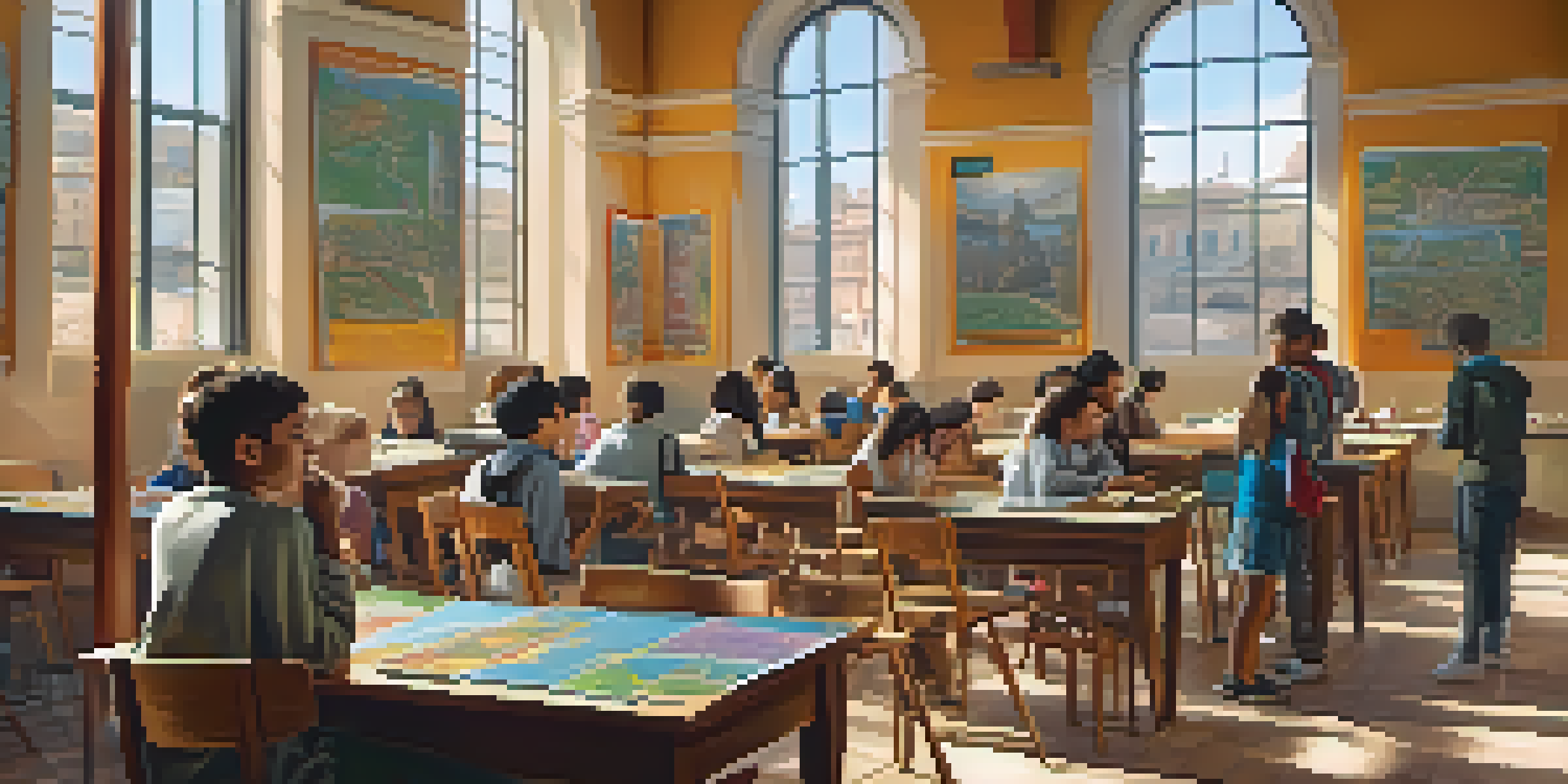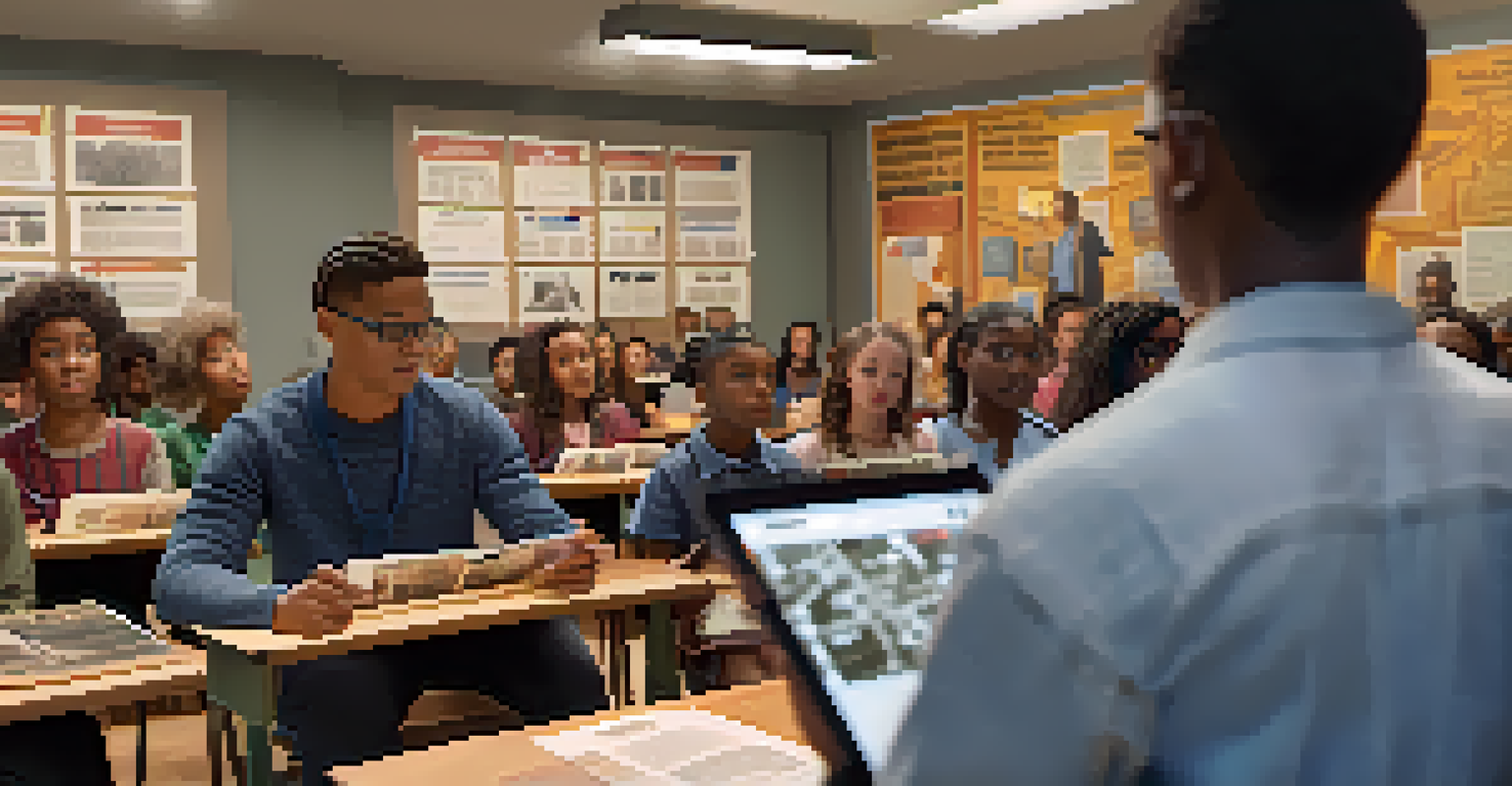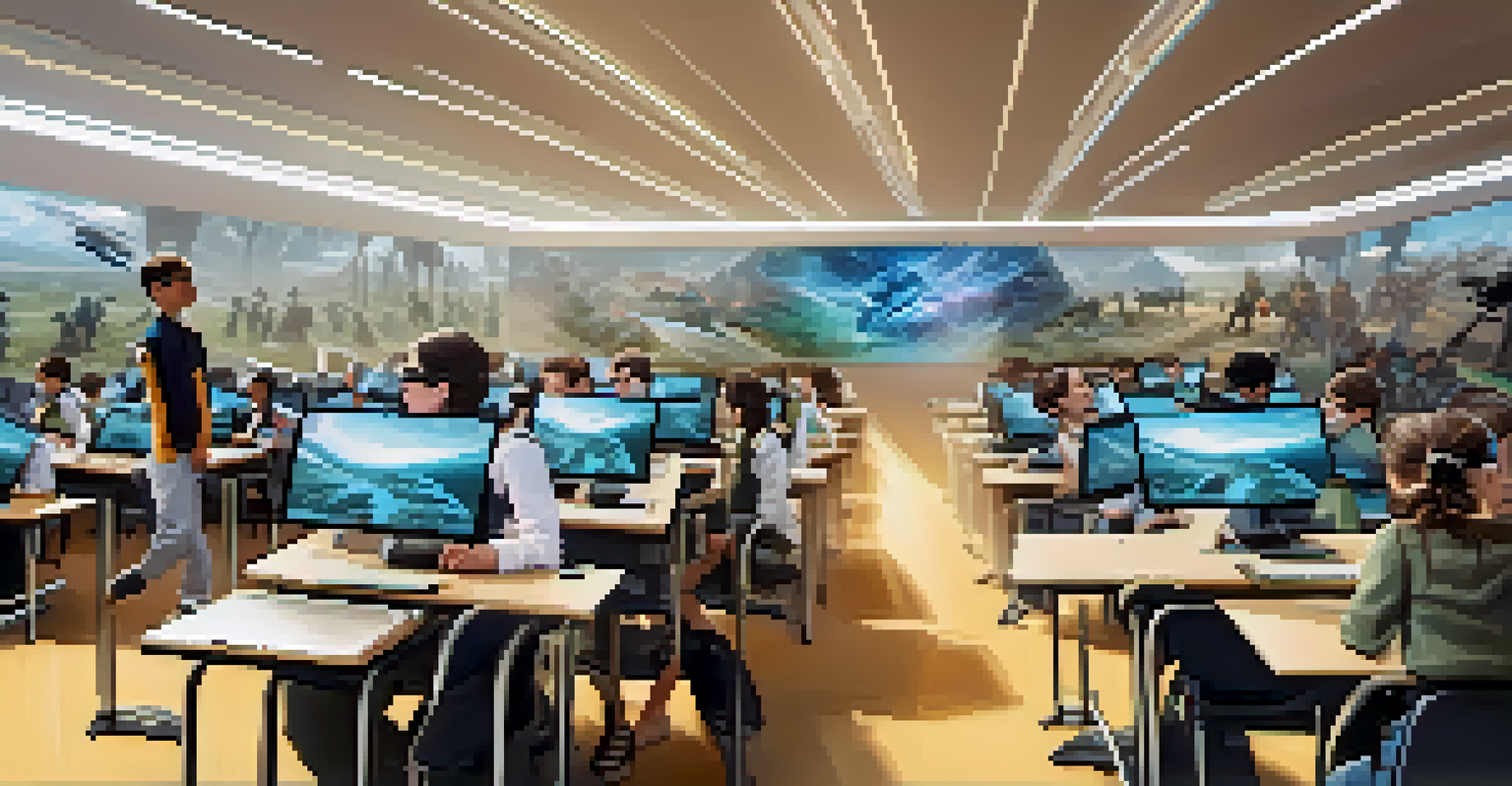Enhancing History Lessons with Augmented Reality Experiences

What is Augmented Reality in Education?
Augmented Reality (AR) combines the real world with digital content, enhancing our perception of reality. In education, especially in history lessons, AR allows students to interact with historical events and artifacts in engaging ways. Imagine walking through a virtual Roman marketplace while sitting in your classroom; that's the magic of AR.
Education is not the filling of a pail, but the lighting of a fire.
This technology overlays images, sounds, and other data onto the physical world, making learning not just visual but experiential. Students can point their devices at a historical site and see a 3D model of how it looked centuries ago. Such immersive experiences can spark curiosity and deepen understanding of historical contexts.
By bringing history to life, AR encourages students to explore and ask questions, fostering a more active and participatory learning environment. Instead of passively absorbing information, they engage directly with the material, making history feel relevant and exciting.
Benefits of Using AR in History Lessons
One of the standout benefits of AR in history education is engagement. Students are often more excited about learning when they can visualize concepts or events. With AR, history lessons become interactive adventures that capture students' imaginations, making them more likely to retain information.

Moreover, AR caters to different learning styles. Visual learners benefit from seeing historical events unfold before their eyes, while kinesthetic learners can interact with the content through touch and movement. This multi-sensory approach ensures that all students can connect with history in a way that resonates with them.
AR Enhances History Learning
Augmented Reality (AR) transforms traditional history lessons into interactive experiences, allowing students to engage deeply with historical events and artifacts.
Additionally, AR can help bridge the gap between historical facts and emotional understanding. By experiencing a reenactment of a significant event, students can develop empathy for those who lived through it, fostering a deeper appreciation for history's complexities.
Examples of AR Tools for History Education
There are several AR applications designed specifically for history education that make learning fun and interactive. For example, apps like Google Expeditions allow students to take virtual field trips to historical sites, complete with guided tours. These experiences transport students to ancient ruins or famous battlefields without leaving the classroom.
The only thing worse than training your employees and having them leave is not training them and having them stay.
Another excellent tool is the AR app called 'HistoryView,' which lets students scan images in their textbooks to see enhanced content. Suddenly, a static page comes to life with videos, 3D models, and additional information, making each lesson more dynamic.
These tools not only enrich the learning experience but also encourage collaboration among students. Working together to explore AR content fosters teamwork and communication skills, essential for success in any field.
Challenges of Implementing AR in Classrooms
While AR offers exciting possibilities, there are challenges to integrating it into history lessons. One major hurdle is access to technology; not all schools have the necessary devices or robust Wi-Fi connections. Ensuring that every student can participate in AR experiences is critical for equitable learning opportunities.
Additionally, teachers may require training to effectively implement AR tools in their curriculum. Without proper guidance, the technology can feel overwhelming or underutilized. Providing professional development opportunities can help educators harness the full potential of AR in their classrooms.
AR Fosters Historical Empathy
By immersing students in significant events through AR simulations, they can develop a better understanding of the emotions and motivations of people from the past.
Lastly, the cost of AR software and devices can be a barrier for some educational institutions. However, as technology becomes more mainstream, there is hope that prices will decrease, making these tools more accessible for all.
Creating AR Content for History Lessons
Teachers can also create their own AR content tailored to their specific history lessons. With platforms like Blippar and Zappar, educators can easily design AR experiences that align with their curriculum. This not only allows for customization but also fosters creativity and innovation in lesson planning.
For instance, a teacher could create an AR experience that overlays facts about a specific historical event on a relevant location, making the lesson more personalized and engaging. Students can even contribute by creating their own AR projects, enhancing their understanding of the material.
By encouraging teachers to develop unique AR content, schools can cultivate a culture of creativity and exploration. This approach empowers educators to experiment with new teaching methods, ultimately benefiting students’ learning experiences.
The Role of AR in Historical Empathy
One of the most profound impacts of AR in history education is its ability to foster historical empathy. When students experience significant events through immersive simulations, they can better understand the feelings and motivations of people from the past. This emotional connection can make historical events feel more real and relevant.
For example, experiencing a reenactment of the civil rights movement through AR can help students grasp the struggles and triumphs of those involved. They can visualize the challenges faced and the courage it took to overcome them, leading to a deeper appreciation for the sacrifices made.
Challenges in AR Implementation
Despite its benefits, integrating AR in classrooms faces obstacles like access to technology, teacher training, and associated costs.
Cultivating historical empathy not only enriches students' understanding of history but also encourages them to think critically about social issues today. By reflecting on the past, they can draw parallels to current events, ultimately becoming more informed and compassionate citizens.
Future Trends of AR in History Education
As technology continues to evolve, the future of AR in history education looks promising. Innovations like 5G connectivity and advanced AR glasses could make these experiences even more immersive and accessible. Imagine students exploring a 3D battlefield with a simple glance, bringing history to life like never before.
Moreover, as AR technology becomes more affordable, we can expect broader adoption in classrooms worldwide. This democratization of technology will allow more students to benefit from engaging and interactive history lessons, regardless of their location or socioeconomic status.

Ultimately, the future of AR in history education holds the potential to transform how we teach and learn about our past. By embracing these advancements, educators can inspire the next generation to appreciate and learn from history in vivid, unforgettable ways.